How to
Choosing the right knife
Picking the right knife for your outdoor adventure can be quite a challenge. In this article, we will cover the different types of blades, grinds and types of cuts and grips you can use in the field.
When spending a lot of time in the nature, there are some different things that you would normally bring: A backpack, shelter materials, water, fire making tools, first aid kit and so on.
One of the things you would naturally bring, perhaps without even thinking about it, is your knife. Perhaps you might bring more than one knife, depending of what tasks you are planning to do.
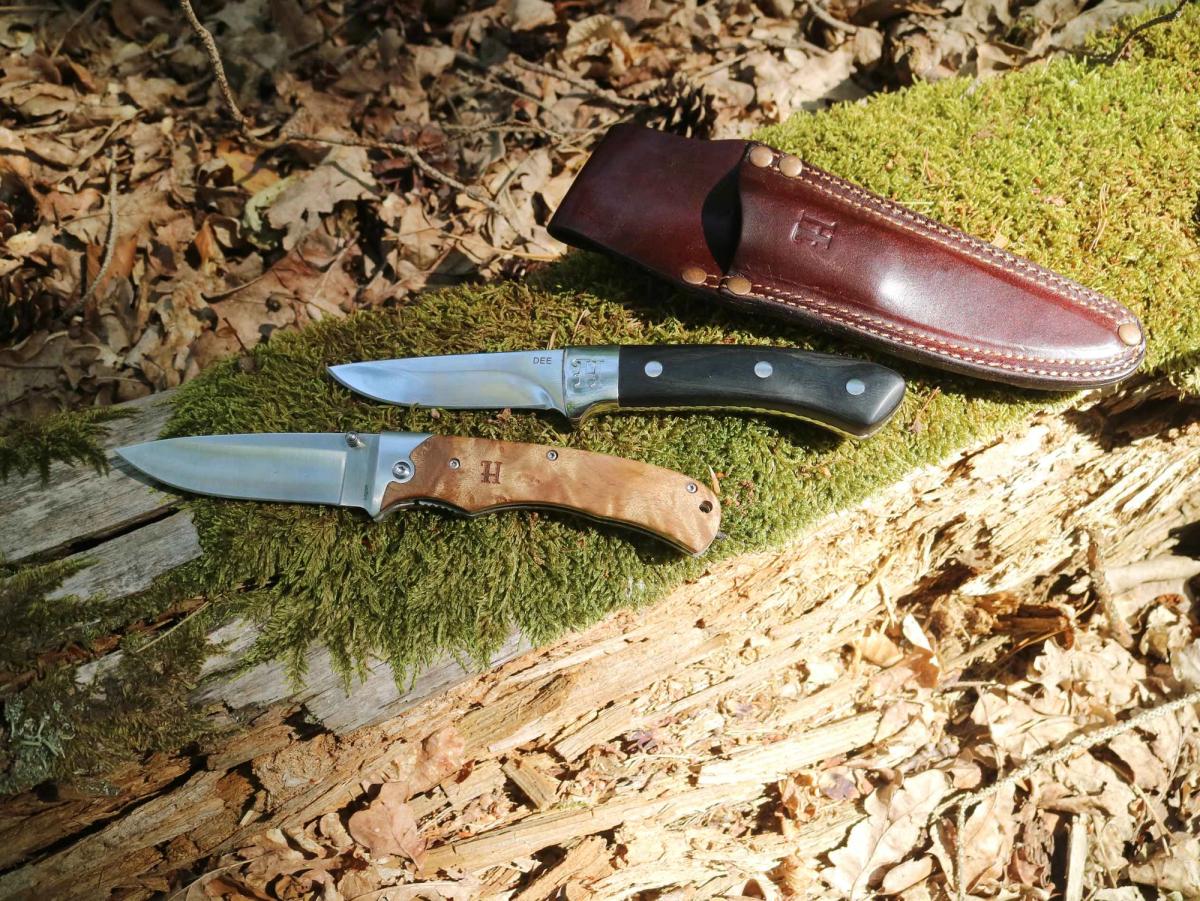
There are a lot of different views and opinions to what type of blade and grind is the best
Choosing the right knife
When choosing your own knife, a lot of questions will emerge. If you already know what you primarily will use the knife for, you might have an advantage when choosing your blade and grind. They all have their advantages and disadvantages.
If you start asking your friends, you will soon discover that there are a lot of different views and opinions to what type of blade and grind is the best, and most of them boil down to a personal preference and experience.
Choosing the perfect knife is not an easy task. You will often have to do a lot of compromises. It could be due to the price, availability, local laws regarding blade length or because you need a knife with a lot of different uses.
You might think about getting two or more different types of knifes, so you can cover all the different tasks. Just try to look in your kitchen drawer and count how many different types of knifes you have here. You will be surprised.
By getting a good quality knife you will normally have a knife that can do most outdoor related tasks, without any problems. But if you know that you will do more specialized tasks like spoon or bowl carving, you might need to look at a more specialized type of knife only for that task.
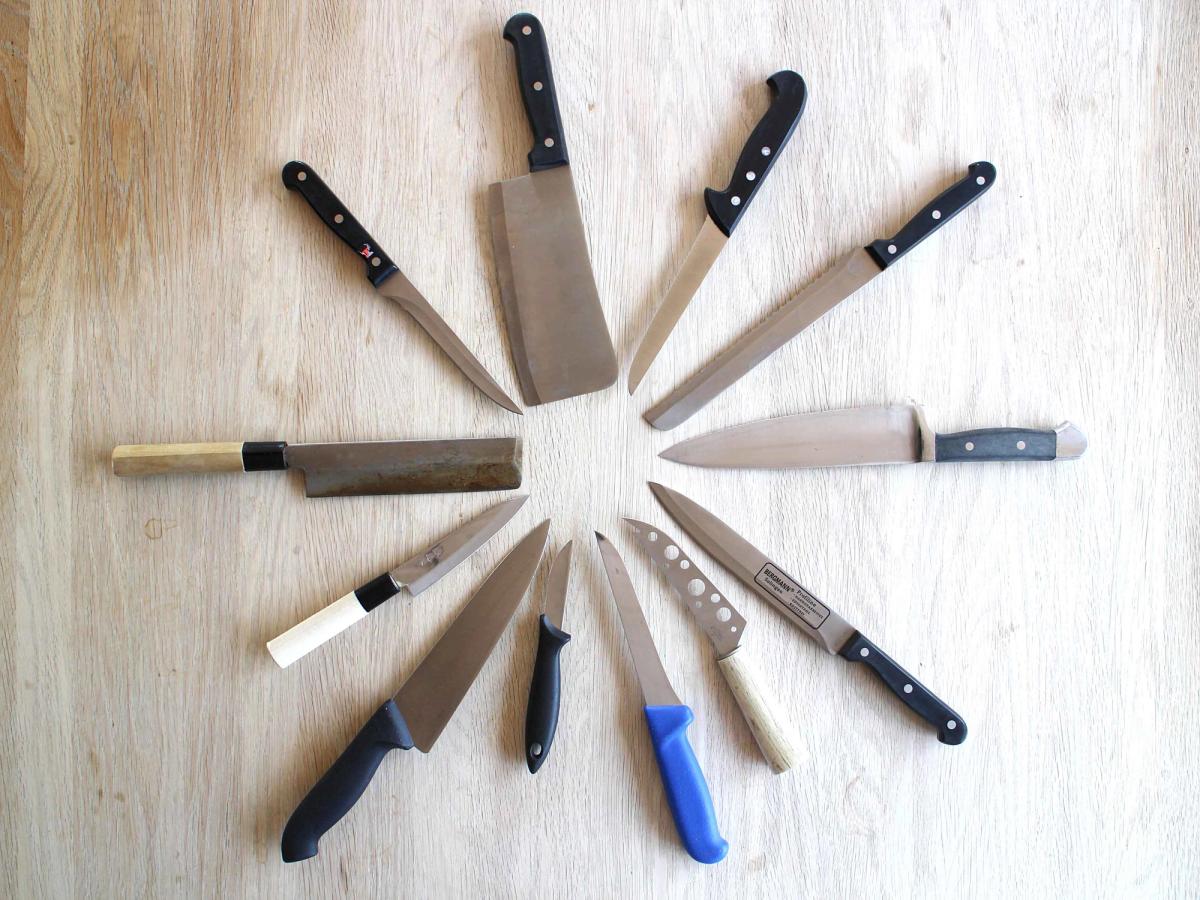
Serrated edge blades
A fully serrated edge blade gives you superior cutting abilities when slicing through hard, tough, thick and fibrous materials. It’s almost like it grabs a hold of the item you are cutting.
Because of the serrations, the knife almost works like a saw. The high points of the serration will apply pressure and will slice through the item faster than a plain edge. Even if the serrations are a bit dull, they are very effective.
The downside of a serrated blade is that it’s significantly difficult to sharpen both in the field and at home. It’s also less precise in the cut than a plain edge, and can tear up the item you are cutting through.

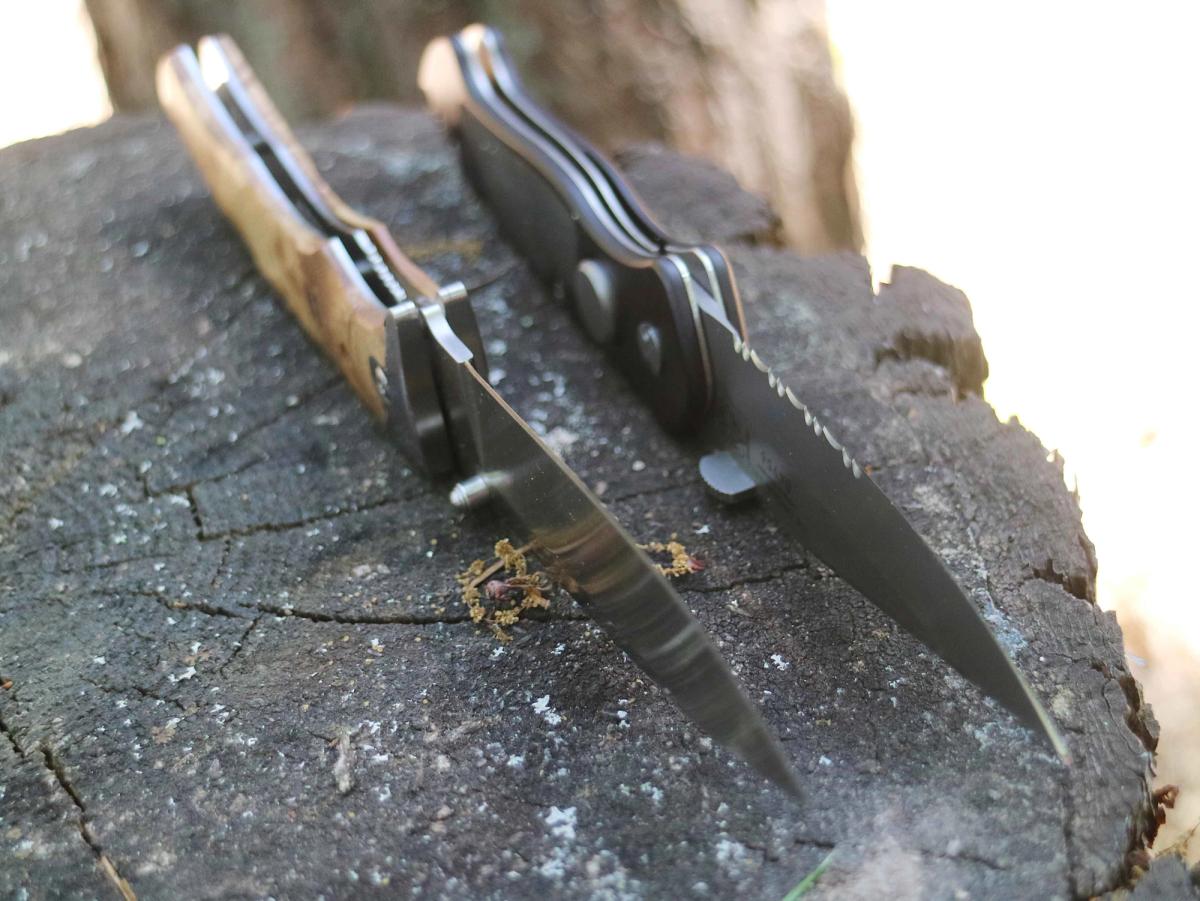
Partially serrated blades
A partially serrated edge blade, or combo blade, gives you two knifes in one: the plain edge knife and the serrated edge knife. But you will only normally have about half of each blade to your disposal.
The good thing is that you have a knife with which you can perform most tasks. You have an area where you can do push cuts, normally the front part of the blade. And you have an area where you can do pull cuts, normally the back part of the blade. This gives you a lot of versatility and different uses of your knife.
Like the fully serrated knife, you will face the difficulties with sharpening the partially serrated edge, and you also have to consider the placement of the serrations on the blade. Depending of your cutting tasks, it is not always useful to have the serrations placed close to the handle, like most of the knifes are made. The closer you get to the handle the more control you have on the cut. The plain edge is normally used for more fine cuts, so the closer to the handle the better.
If you primarily plan to do a lot of cutting or sawing in hard materials, a fully serrated blade is the way to go.
If the choice is between a fully or partially serrated blade only, my recommendation is to have a partially serrated blade, as this will allow you to overcome some of the downsides of the fully serrated blade. You will have the ability to do both push and slicing cuts with one blade.
Plain edge blades
If you primarily do push cuts in the field, a plain edge blade is the best for you. By using a knife with a single sharp edge, you will get clean cuts and an increased accuracy compared to the serrated edge.
The knife will be very easy to sharpen, even in the field. If you sharpen your knife before you leave for your trip, you can bring a small sharpening stone or a stropping block, to keep the edge sharp, if needed.
By using a plain edge blade only, you will lose the ability to effectively saw and perform pull cuts in hard materials. When cutting in hard materials or rope, you will also experience that the knife will become dull faster than a serrated edge blade.
If you find yourself performing push cuts throughout the day like making tent pegs, chopping food, or carving wood spoons, the plain edge blade will be perfect for you. Chances are that you will do just fine with a plain edge blade.
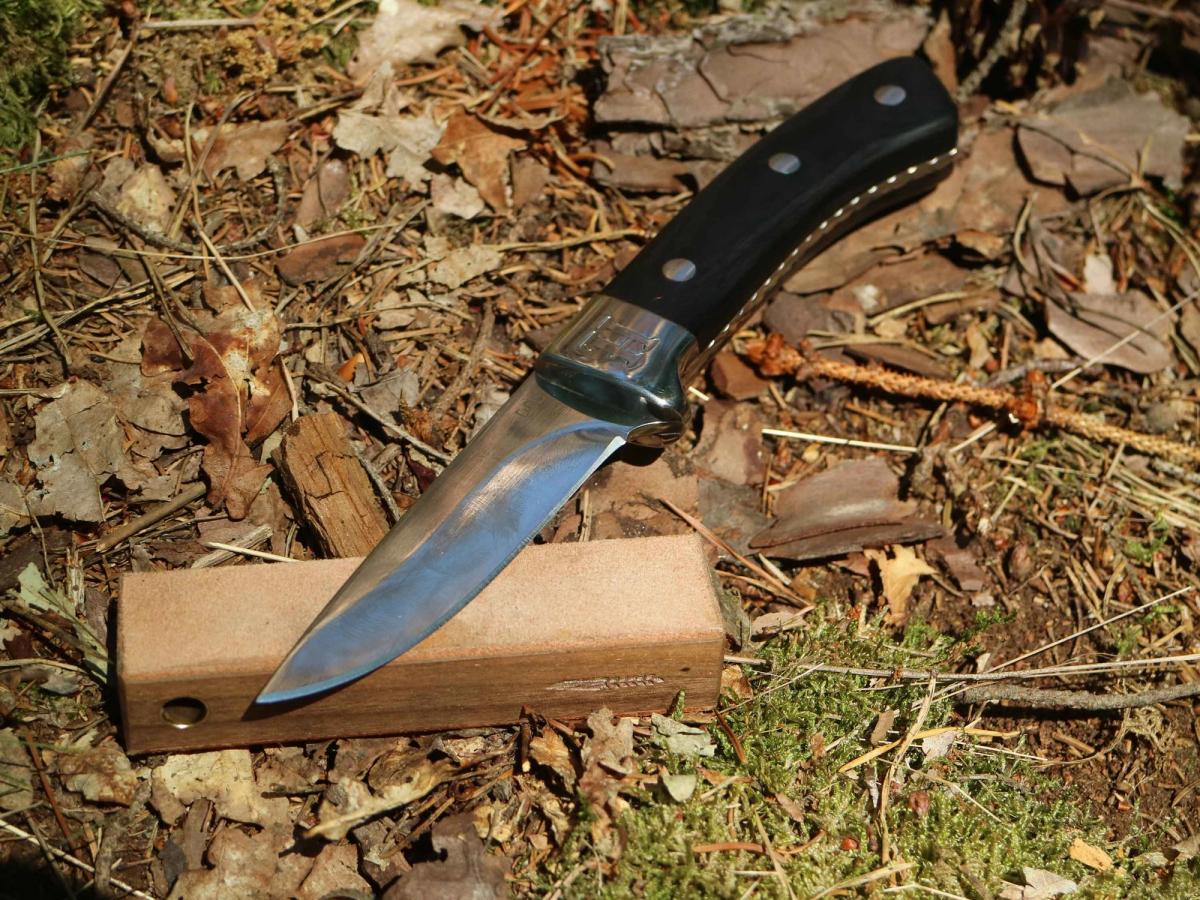
Choosing the grind of your knife
The most common blade grinds for knifes are hollow, flat, convex and especially for the Scandinavian countries, scandi grind.
The hollow grind will give you a razor-sharp edge, because it can become so thin. The downside is because it’s so thin, it is also vulnerable for chipping or breaking.
A lot of knives have a flat grind, as it’s the simplest type of grind. A kitchen knife will typically have this sort of grind. It will give you a sleek and strong knife. The blade can become a little thicker behind the blade, if you sharpen it to often. This will make it difficult to cut through wood and harder materials.
In contrast to the hollow grind the convex grind is the opposite. The grind is rounded and there is not a secondary edge. The benefits are a blade with a strong edge while being able to cut smoothly. Because of the maximum amount of material behind the blade, a convex grind type knife is built for hard use. The disadvantage is that it is hard to make a good convex edge, and this makes the knife is more expensive. Sharpening the edge can also be more difficult, especially in the field.
Scandi grind is almost the norm for Scandinavian traditional outdoor and bushcraft knifes. The grind is practically one large secondary edge.
A scandi grind is very good for most bushcraft, especially woodwork. The blade is normally very thick and can take a beating without problems. The downside of the grind really shows if you have chipped the edge. You will have to work a long time sharpening the blade because of the broad edge.
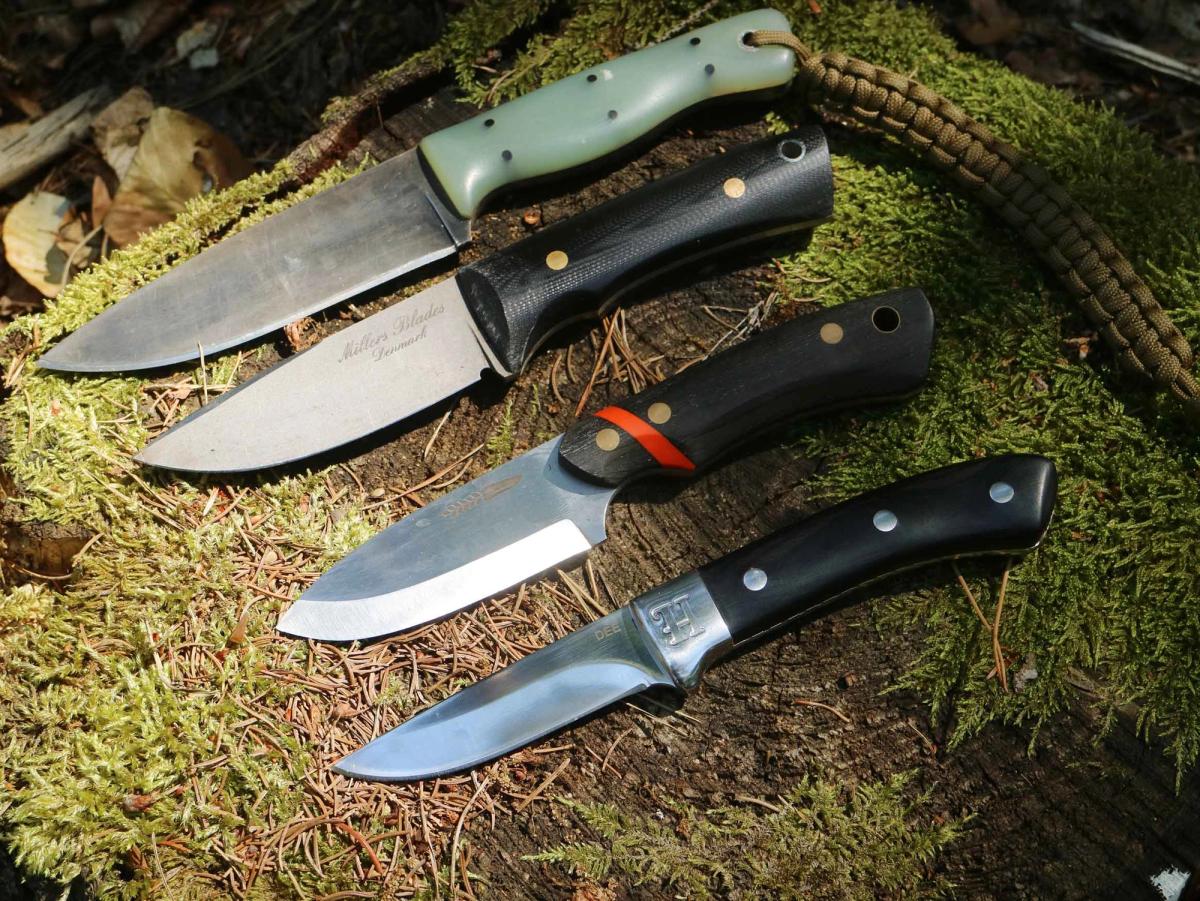
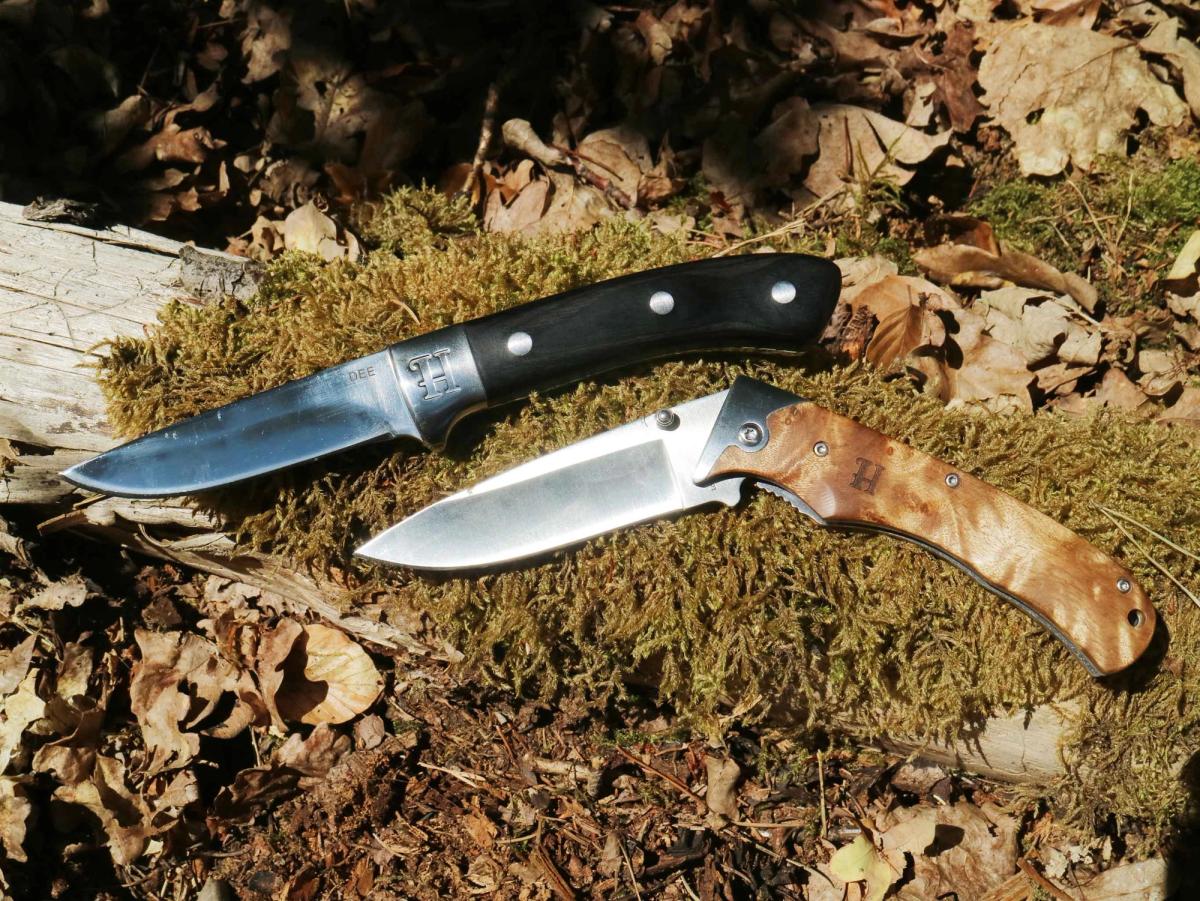
Handling your knife
Always handle your knife in a safe manner. Never throw your knife to a person, even if it’s inside the sheath. When handing your knife to another person in a safe way, pull it out of its sheath and present it with the handle forward towards your friend and the edge of the knife pointing up and away from your hand.
By handing it over this way you will not be cut, and your friend will just have to rotate the knife handle in his hand to use the knife.
There’s no right or wrong about the way you carry your knife, as long you do it in a safe manner. Normally a knife is supposed to be carried in its sheath on your belt or in your pocket, if it it’s a folder. Another way of carrying your knife is around your neck. Especially when you are working with it around your camp, it will make it possible for you to reach your knife easily and place it in the sheath almost without looking at it.
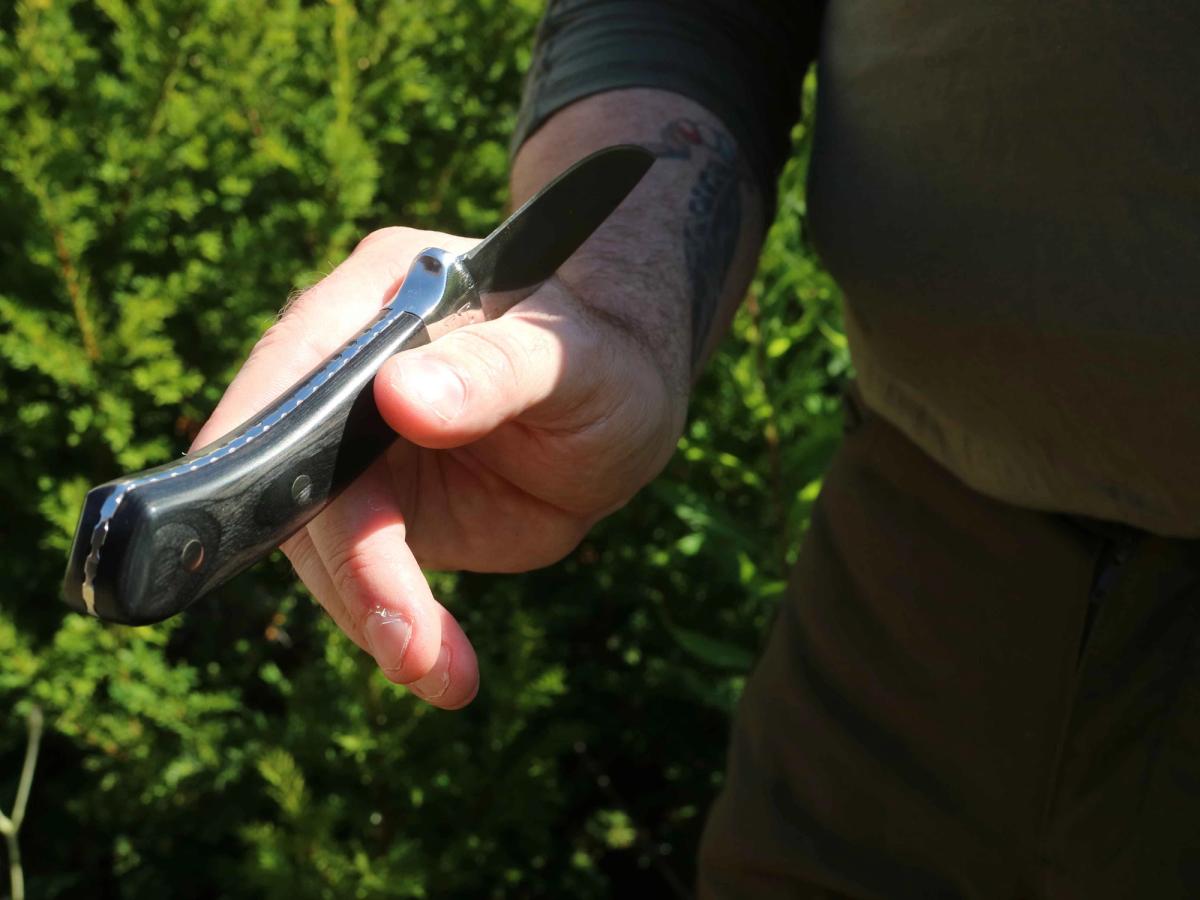
Should I use a lanyard?
If your knife is fitted with a hole for a lanyard it could be tempting to use one. I normally use a braided piece of paracord to get a better grip.
If you just make a loop, you run the risk of having your knife pulled from its sheath unintentionally, if the loop catches a branch.
You can also just use a piece of paracord in a strong color, without the loop, so you are able to locate your knife if you drop it.
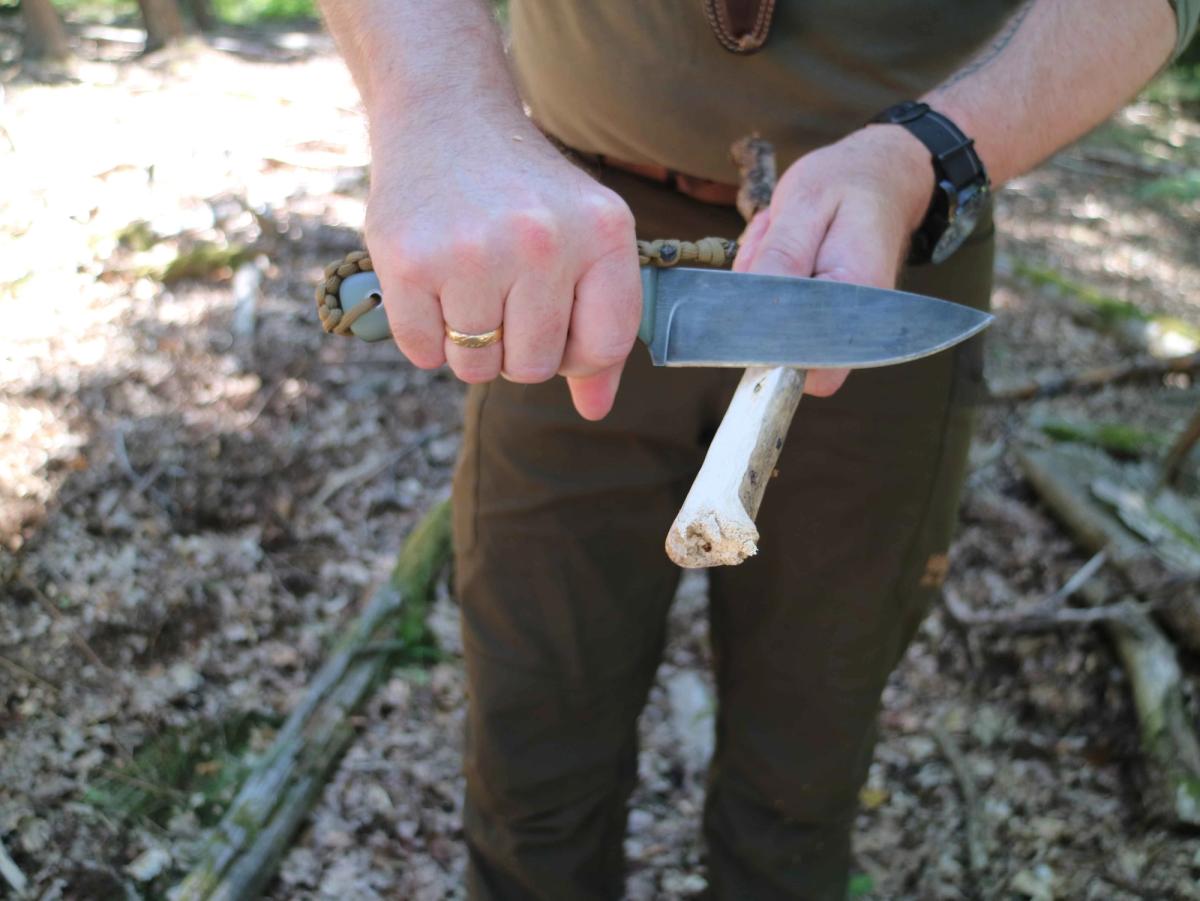

You can even get paracord with reflective material woven in, so you can locate your knife with a flashlight during the dark hours.
Different types of cuts and grips when using your knife
When using a knife, you make different types of cuts. The most normal is pushing, slicing and chopping.
When working with wood like making tent pegs or firesticks, you normally use the push cut. You apply force forward and push the edge into the item.
The slicing cut is mostly used when you cut a piece of rope, hard materials, fibers or a tomato.You drag the edge across the item like a saw, to do a slicing cut.
When chopping a branch off a tree, you use your knife in a single downward motion. This way you take advantage of the full force of acceleration and gravity.
The grip you will use the most is probably the forehand grip. It’s the strongest grip used when you have to do power cuts, like cutting a thick branch or something like that. The blade is facing away from you and you have a lot of control.
You might place the thumb on the back of the blade to get more control and pressure on the area you are cutting, in many of the different types of grips.
The next grip is the backhand grip, with the edge facing towards yourself. It’s used mainly when you cut string or if someone is holding the item you are cutting. This way you are in control of the blade.
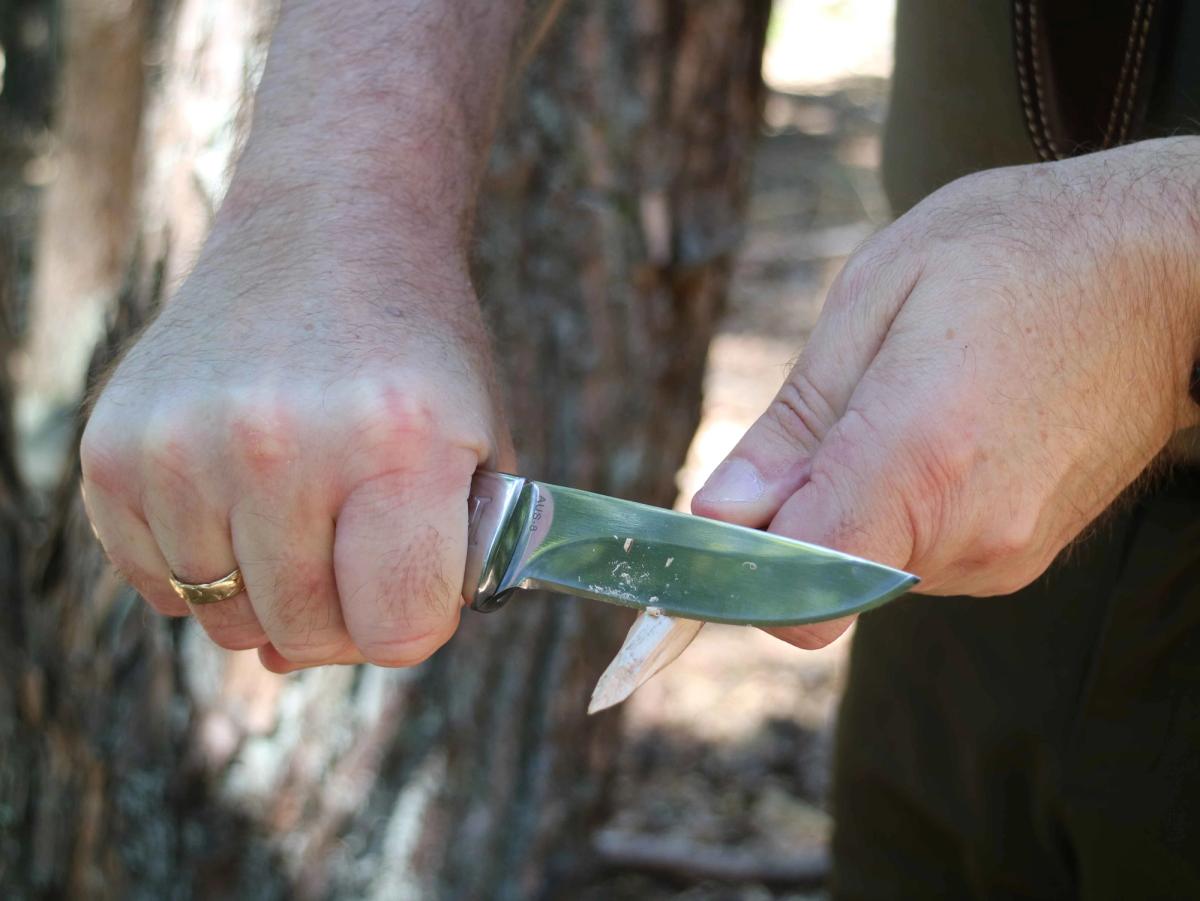
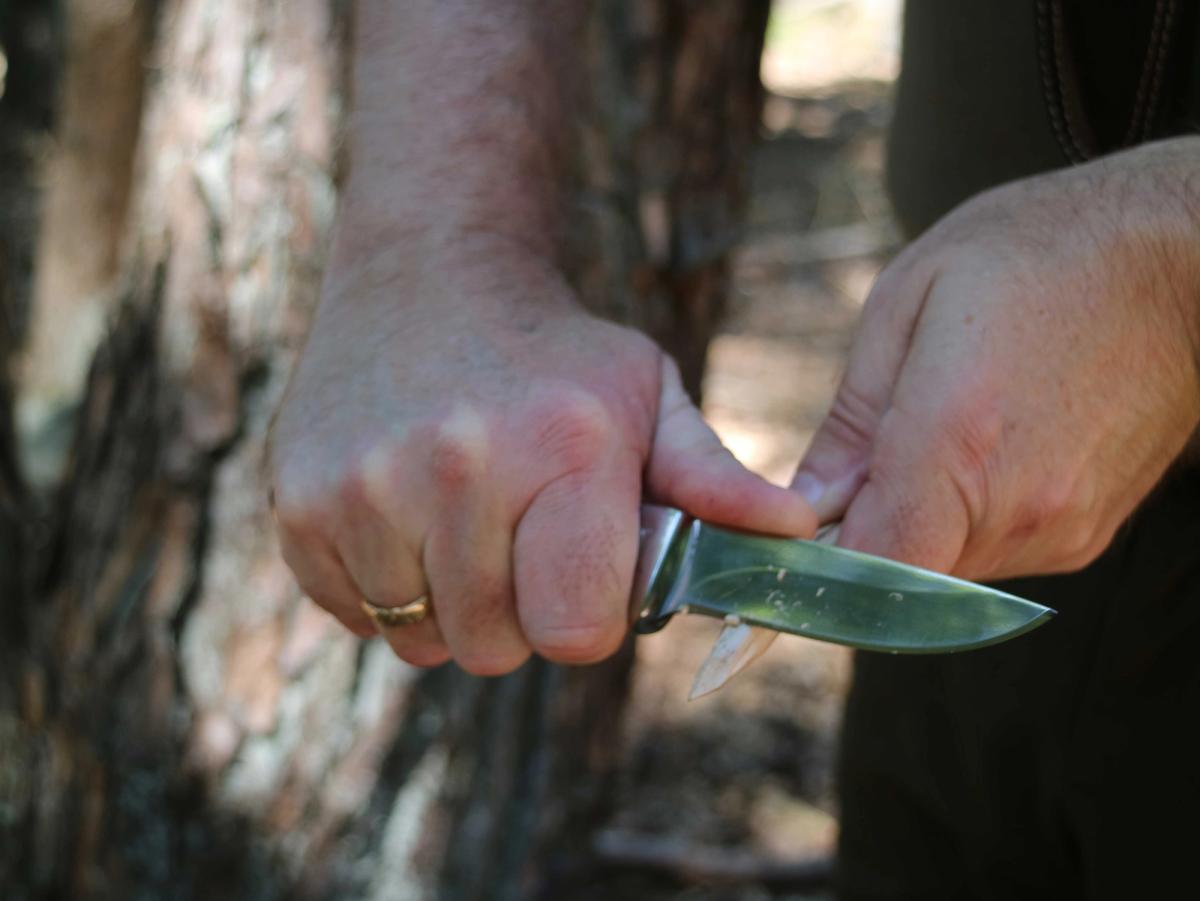
The chest leaver grip is used where you need to have a lot of control of a very powerful grip. You place the blade facing away from your body, close to your chest, and control the blade with your thumb. It’s a very safe grip as you have full control of your blade.
Pull strokes are used when carving or cutting towards yourself. By keeping your elbows tight to your sides and the wrist of your knife hand pressed to your ribs, you will notice your blade will be unable to reach your chest.
If you need to have more control of the blade for finer cutting, you can do this by gripping the blade itself and do your cut or woodwork. This grip is often used when making the small depression in a fireboard, when making the socket for the drill in a bow drill set.
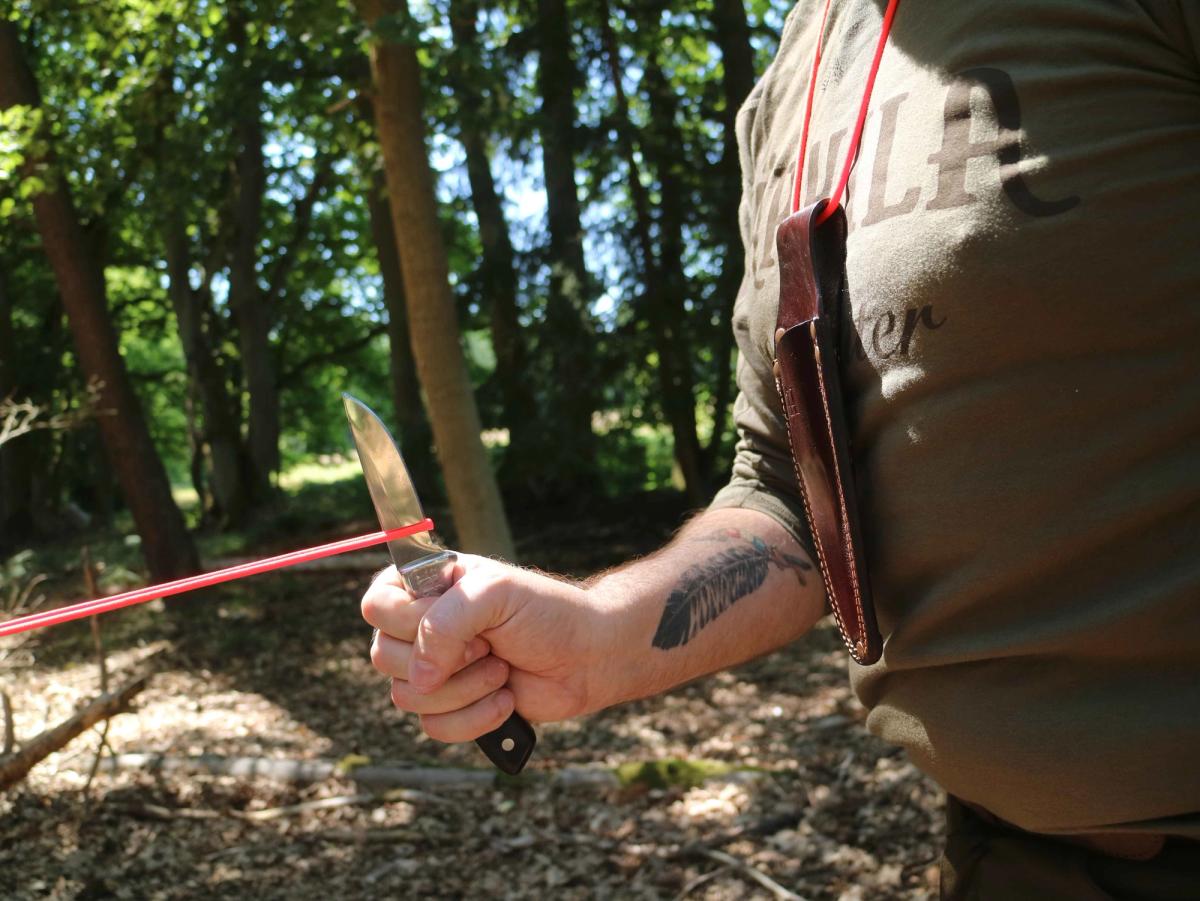

//Safety note// (the text online and in our folder doesn't match up, this is from the folder)
As a last note, never work with your knife between or on your legs, as you have the femoral artery and vein very close to your skin in that area.
If you cut one of those, it’s only a matter of a few minutes before it will become fatal.
Always try to cut away from yourself, and on the outside of your legs. Especially when using any of the power cuts.
// Written in corporation with Claus S. Andersen who is a certified SERE (Survival, Evasion, Resistance, Extraction) instructor from the Swedish Defense Forces Survival School in Karlsborg, Sweden. He has participated in and worked as an instructor on numerous wilderness courses in Europe and USA //